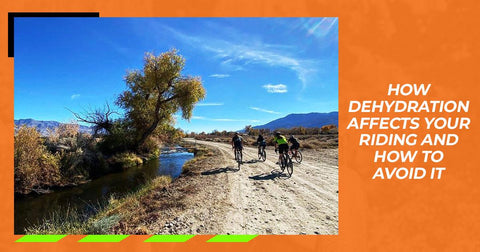Proper hydration is an absolute must whether you're pushing your boundaries in training, conquering the great outdoors, racing against the clock, or simply relishing the sheer joy of riding. With all those miles unfolding beneath your wheels, especially under the blazing sun, it's alarmingly easy to slip into dehydration – a situation where your body loses more water than it takes in.
Dr. Phil Watson from Free University, Brussels, brings to light how dehydration can throw a wrench into your vehicle-handling skills, be it a bike or a car. Surprisingly, even a minor drop in body fluids can throw off your performance and muscle capacity, elevating the risk of mishaps on the road.
In the heat of a race or during long rides, the tendency to skimp on fluids to dodge pit stops is common. However, Jane Holdsworth, the Director of the European Hydration Institute (EHI), sounds the alarm that this tactic could lead to mild dehydration and its telltale symptoms.
Let's dive into some user-friendly advice to ensure your hydration stays on point, both before and during your rides:
Before the Ride Whether you're pedaling or pausing, prioritizing water intake is essential – aim for a consistent 2-3 liters daily. Incorporate water-rich fruits into your diet and embrace beverages like sports drinks, coffee, and tea. These drinks work wonders in replenishing your body's lost electrolytes. However, it's important to be mindful of caffeine intake – moderation is key.
Pro tip: There's no need to consume excessive amounts of water the day before your ride. If you're already monitoring your fluid intake, there's no need to overdo it.
During the Ride Feeling thirsty while pedaling isn't solely about water intake. Factors such as weather conditions, the intensity of the sun, and the temperature of the road all play a role in affecting your hydration levels. Besides taking sips during planned stops, it's crucial to ensure you're equipped with comfortable and breathable outdoor gear designed for your ride.
The ultimate secret to combating dehydration (and its counterpart, overhydration) lies in consistency. Sip smartly – just enough to keep your body performing optimally. And make a habit of maintaining a steady hydration routine as part of your training regimen.
Why You Need a Hydration Pack In addition to regular drinks, consider investing in a hydration pack for your rides. Hydration packs offer several advantages:
- Convenience: Hydration packs allow you to sip water or sports drinks without having to stop or fumble with bottles. It keeps you hydrated on the move.
- Hands-Free: With a hydration pack, both of your hands remain free to steer, shift gears, and maintain control, enhancing your safety.
- Consistent Hydration: These packs have a reservoir that stores a substantial amount of liquid, ensuring a steady supply during long rides.
- Temperature Control: Many hydration packs come with insulated reservoirs, keeping your drinks cool even on hot days.
- Storage: Hydration packs often have extra compartments for storing small essentials like energy gels, tools, or your smartphone, making them incredibly practical.
So, before you set out on your ride, remember that staying properly hydrated is not just about how much you drink but also about how effectively you manage your hydration with the right gear, like a hydration pack. It's a game-changer for a safe and enjoyable cycling experience.
So, remember, the hydration game isn't about downing gallons of water; it's about making savvy sips that keep your wheels turning smoothly. Pedal on, stay hydrated, and conquer those trails!

